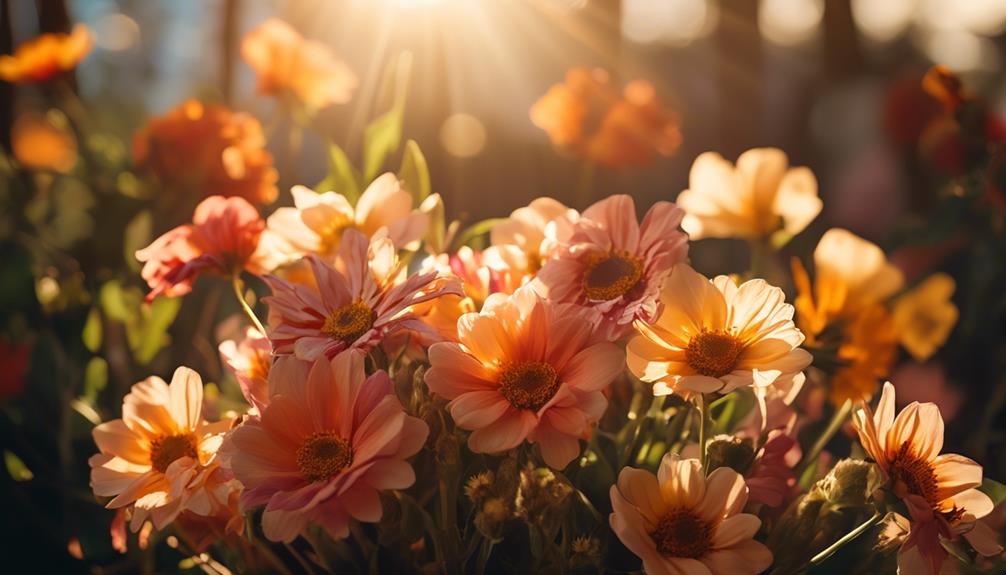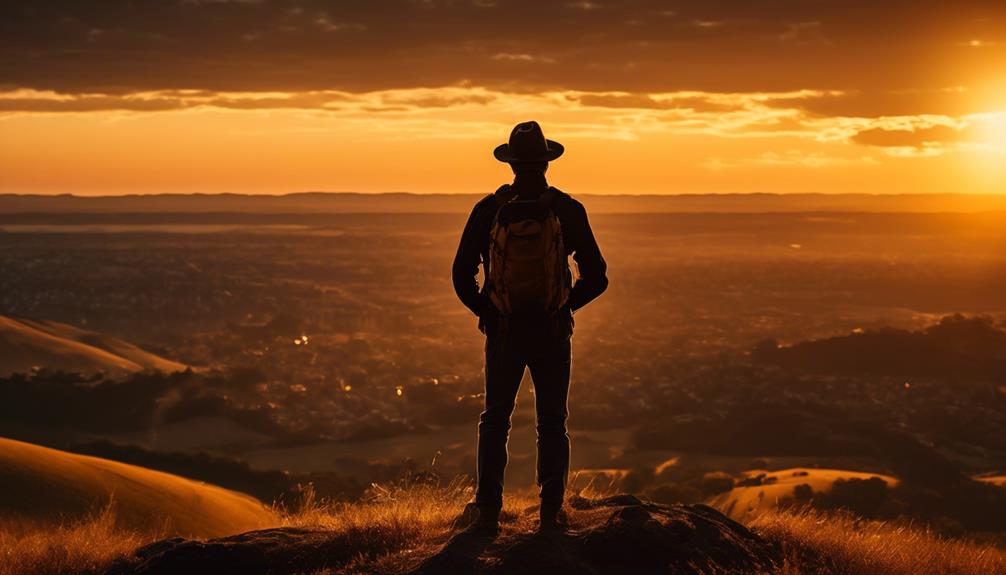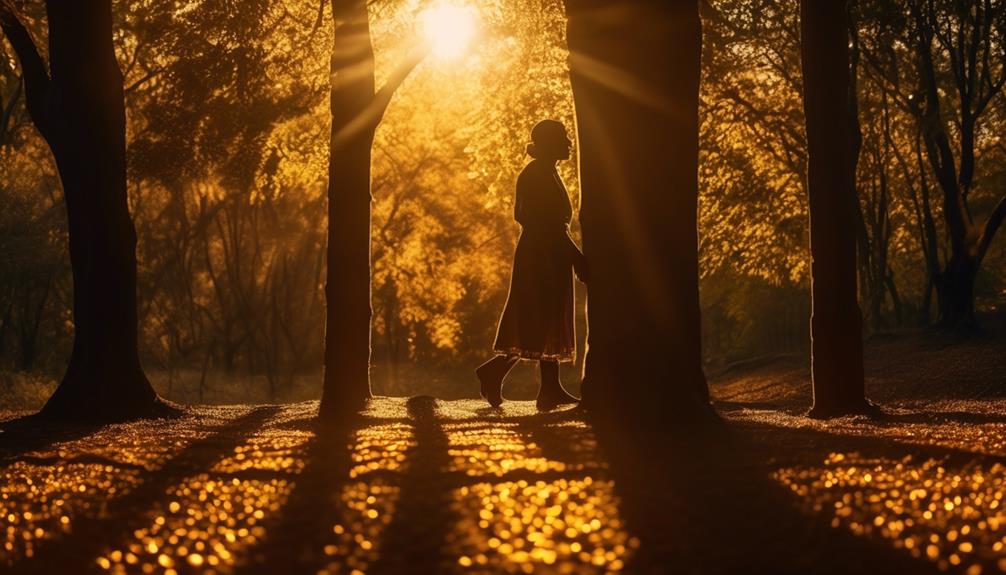Please note this post may contain affiliate links picked by me (Jay) that I have deemed may be of interest or relevant to you the reader of this.
These links do not affect the cost of the thing if you decide to purchase but i may get a little money if you choose to purchase.
For more information on my affiliate link policy click here.
As the golden rays of sunlight dance upon the world, I can't help but marvel at the way it transforms ordinary scenes into breathtaking works of art. There is a certain magic in capturing the essence of a moment bathed in natural light – a magic that no artificial lighting can replicate.
Natural sunlight has a way of infusing photographs with warmth, depth, and a sense of life that can leave viewers spellbound. But why, you may ask, should we choose natural sunlight for our photography endeavors?
Well, my friends, let me take you on a journey through the wonders of this celestial painter, and together, we shall uncover the secrets behind its ability to create stunning photography.
Key Takeaways
- Natural sunlight enhances the details and colors of subjects, creating a soft and flattering effect.
- The golden hour and blue hour are the best times of day for natural light photography, offering unique tones and beautiful backdrops.
- Look for areas with sunlight coming from an angle, and avoid obstructions like tall buildings or trees that cast unwanted shadows.
- Techniques such as creative editing, reflectors, and diffusers can maximize the use of natural light and overcome challenges such as shadows.
Benefits of Natural Sunlight for Photography
One of the most exciting aspects of photography is harnessing the power of natural sunlight to capture breathtaking images. The advantages of using natural sunlight in photography are numerous, and I'm thrilled to share some tips and tricks with you to make the most of it.
Firstly, natural sunlight provides a soft, flattering light that enhances the details and colors of your subjects. Unlike artificial lighting, which can often be harsh and create unflattering shadows, sunlight creates a natural and appealing glow. This is especially useful in portrait photography, where you want to highlight the features of your subject.
Secondly, natural sunlight offers an ever-changing and dynamic lighting environment. As the sun moves across the sky, the angle and intensity of the light change, providing a variety of lighting conditions to play with. This allows for creativity and experimentation, resulting in unique and striking compositions.
To make the most of natural sunlight, here are a few tips and tricks. Firstly, consider the time of day. The golden hour, which occurs during sunrise or sunset, offers the most beautiful and warmest light. Secondly, use reflectors or diffusers to manipulate the light. Reflectors bounce sunlight back onto your subject to fill in shadows, while diffusers soften and spread the light for a more even illumination.
Best Time of Day for Natural Light Photography
The best time of day for natural light photography is during the golden hour, when the sun is low on the horizon and casts a warm, soft glow. This magical hour occurs twice a day, just after sunrise and just before sunset. During these moments, the light is diffused and creates a beautiful, golden hue that adds depth and dimension to your photographs.
The golden hour is highly sought after by photographers because it offers a unique quality of light that can't be replicated at any other time of day. The soft, warm tones create a flattering and ethereal atmosphere, making it perfect for capturing portraits, landscapes, and even architecture.
But the golden hour isn't the only prime time for natural light photography. There's also the blue hour, which happens shortly before sunrise and after sunset. This is the time when the sky takes on a deep, rich blue color, providing a serene and tranquil backdrop for your images.
During both the golden hour and the blue hour, the angle of the sun is lower, resulting in longer shadows and more interesting textures. This can add drama and visual interest to your photos, making them stand out from the rest.
To make the most of these magical hours, it's important to plan ahead and be prepared. Scout your location beforehand and take note of the best vantage points and compositions. Use this time to experiment with different angles and perspectives, and don't be afraid to get creative.
How to Find the Perfect Lighting Spot
When searching for the perfect lighting spot, I always keep an eye out for areas with unobstructed access to natural sunlight. As a photographer, finding the right lighting is crucial for capturing stunning images. Natural sunlight offers a unique quality that artificial lighting simply cannot replicate. It brings warmth, depth, and a natural glow to photographs, creating a captivating visual experience.
To help you find the perfect lighting spot, I have compiled a handy table that highlights the key factors to consider:
| Factor | Description |
|---|---|
| Direction of Light | Look for areas where the sunlight is coming from an angle rather than directly overhead. This creates interesting shadows and adds dimension to your photos. |
| Quality of Light | The ideal camera settings for capturing golden hour shots can vary depending on the desired effect. Experiment with different settings to achieve the perfect balance between brightness and contrast. |
| Obstructions | Avoid locations with tall buildings, trees, or other objects that may cast unwanted shadows or block the sunlight. Open spaces with unobstructed access to sunlight are ideal for creating dramatic and well-lit photographs. |
| Time of Day | Timing is everything when it comes to natural light photography. The golden hour, which occurs during the first and last hours of sunlight, offers a soft, warm glow that adds a magical touch to your images. Plan your photoshoots accordingly to make the most of this enchanting lighting.
Techniques for Maximizing Natural Light in Photos
To capture the full beauty of natural light in your photographs, employ techniques that maximize its impact and bring your images to life. One effective technique is using creative editing techniques to enhance the natural light in your photos. Post-processing software allows you to adjust the brightness, contrast, and color to further enhance the natural light captured in your images. By experimenting with different editing techniques, you can create stunning effects that accentuate the natural light and make your photos truly stand out.
Another technique for maximizing natural light in your photos is by using reflectors and diffusers. Reflectors are tools that bounce the natural light onto your subject, filling in shadows and creating a more balanced and even lighting. They come in various sizes and materials, such as silver, gold, or white, each producing a different effect.
Diffusers, on the other hand, soften harsh sunlight, creating a more gentle and flattering light. They can be used to reduce the contrast between light and shadow, resulting in a more pleasing and natural look. By strategically positioning reflectors and diffusers, you can manipulate the natural light in your photography to achieve your desired effect. Whether you want to create a soft and dreamy portrait or a dramatic landscape, these tools allow you to control and shape the light to suit your vision.
Experimenting with different angles and distances between the reflector or diffuser and your subject can bring about unique and captivating results.
Overcoming Challenges of Shooting in Natural Light
Shooting in natural light can present unique challenges, but with the right techniques and equipment, you can overcome them and capture stunning photographs.
One of the main challenges of shooting in natural light is dealing with shadows. Shadows can be harsh and can obscure important details in your photograph. However, by using certain techniques, you can overcome this challenge and create beautiful images.
One way to overcome shadows is by utilizing reflectors. Reflectors bounce light back onto the subject, filling in the shadows and creating a more balanced lighting situation. They come in various sizes and colors, allowing you to customize the lighting according to your preferences.
Another technique to overcome shadows is to shoot during the golden hour. The golden hour refers to the period shortly after sunrise or before sunset when the light is soft, warm, and diffused. This type of lighting can help minimize harsh shadows and create a more flattering and ethereal effect in your photographs. Plan your shoots accordingly to take advantage of this magical lighting.
In addition to these techniques, having the right equipment can also help overcome the challenges of shooting in natural light. Consider investing in a good quality lens with a wide aperture. A wide aperture allows more light to enter the camera, enabling you to shoot in low-light conditions without compromising image quality. Additionally, a tripod can help stabilize your camera, particularly during longer exposures when shooting in low light.
Frequently Asked Questions
Can I Achieve the Same Results With Artificial Lighting as I Can With Natural Sunlight?
I believe achieving natural looking portraits with artificial lighting can be challenging, as it may not replicate the same warmth and depth that natural sunlight provides. However, there are advantages to using natural sunlight for landscape photography, such as the soft, diffused light that enhances colors and textures.
Natural sunlight also creates dynamic shadows, adding depth and dimension to your images. Overall, while artificial lighting can be effective, there's a certain magic that natural sunlight brings to photography that's hard to replicate.
Are There Certain Weather Conditions That Are Better for Using Natural Sunlight in Photography?
The best time to use natural sunlight in photography depends on the ideal conditions. Weather conditions like clear skies, soft clouds, and warm sunlight can create stunning and vibrant images. The play of light and shadows adds depth and dimension to the photographs, making them visually captivating.
The magic of natural sunlight brings out the true colors and textures, giving a natural and authentic feel to the images. Capturing these moments in the perfect weather conditions can elevate your photography to a whole new level.
How Can I Avoid Harsh Shadows When Shooting With Natural Sunlight?
To avoid harsh shadows when shooting with natural sunlight, I've found a few tricks that work wonders.
First, I position my subject so the sunlight hits them from the side, creating soft lighting.
I also use a reflector to bounce light onto the subject, filling in any shadows.
Another technique is to shoot during the golden hour, when the sunlight is warmer and less intense.
Can I Use Natural Sunlight for Indoor Photography?
Yes, I can definitely use natural sunlight for indoor photography. By strategically positioning reflectors, I can enhance the natural light and create a soft lighting effect.
The beauty of using natural sunlight is that it brings a sense of authenticity and vibrancy to my photos. It adds a touch of innovation and helps me capture stunning images that truly stand out.
What Are Some Tips for Capturing Stunning Silhouettes Using Natural Sunlight?
When it comes to capturing stunning silhouettes, natural sunlight can work wonders. Here are a few tips that I've found helpful:
First, find a strong light source and position your subject against it. This will create a striking contrast between the light and dark areas of the photo.
Secondly, experiment with different angles and compositions to add depth and drama to your silhouettes.
Lastly, don't be afraid to play around with exposure settings to achieve the desired effect.
The power of natural sunlight is truly remarkable for creating captivating and dynamic images.
Conclusion
As the sun sets on another day, I'm reminded of the captivating power of natural sunlight in photography. It's the golden thread that weaves through our images, adding depth, warmth, and a touch of magic.
Like a painter's brush, it transforms ordinary scenes into extraordinary masterpieces. Embracing natural light allows us to capture the true essence of our subjects, bringing them to life with a radiant glow.
So, let's keep chasing the sun and unlocking the endless possibilities it holds for our photography journeys.


